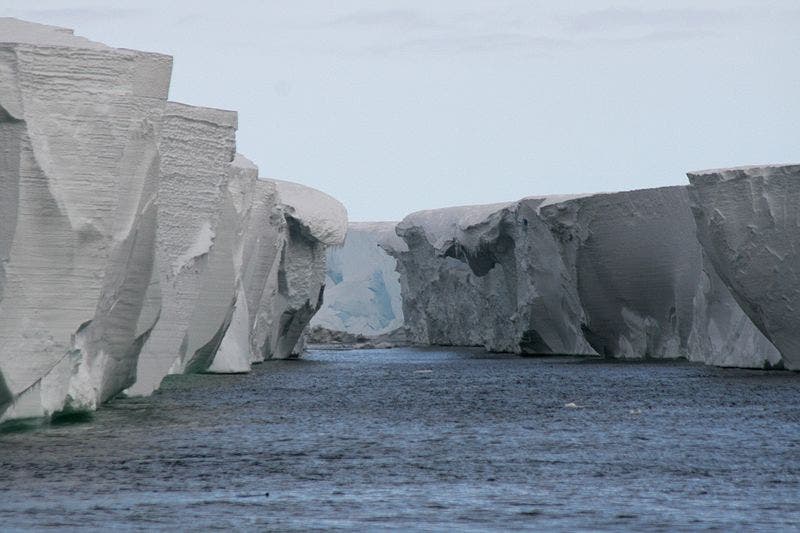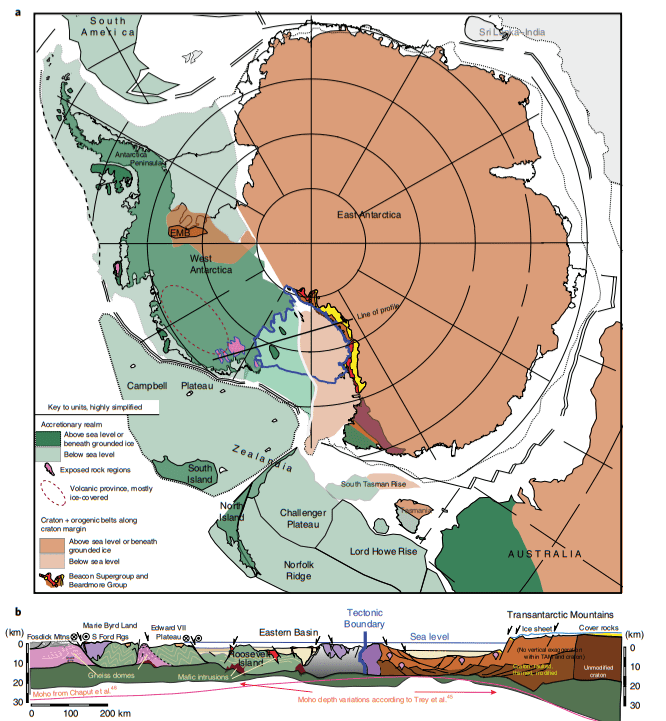Insight gained from a data collection survey of Antarctic Ice shows that local ocean currents play a heavy hand in how ice shelves evolve over time.

Image credits lin padgham / Flickr.
Ice shelves are massive bodies of floating ice that form where glaciers meet the ocean. Such structures are humbling to behold, but they also play a central part in the evolution of the glaciers that spawn them. In Antarctica’s case, they slow down the flow of ice going from the continent into the ocean — and thus, slow down their rates of melting. One such ice shelf, the Ross Ice Shelf, dams around 20% of Antarctica’s ground ice from slipping under the waves.
The stakes are geological in proportion. All of the ice that the Ross Ice Shelf has been corralling is equivalent to an estimated 38 feet of global sea level rise, should it ever melt. And Antarctic ice has been experiencing an accelerated rate of melting. As such, it’s paramount that we properly understand shelf dynamics in the area and the factors that can hasten or slow the melting of the Ross Ice Shelf.
Local influence
Data gathered by a three-year, multi-institutional research effort — the ROSETTA-Ice project — comes to flesh-out our understanding of the area. The team reports they have assembled an unprecedented view of the structure and evolution of the Ross Ice Shelf over time. They also report uncovering a yet-unknown geologic structure that restricts the movement of local ocean currents, with significant effects on the ice shelf’s stability.
“We could see that the geological boundary was making the seafloor on the East Antarctic side much deeper than the West, and that affects the way the ocean water circulates under the ice shelf,” explains Kirsty Tinto, a researcher at Columbia University’s Lamont-Doherty Earth Observatory who led all three field expeditions and is the lead author of the study.
The team’s first hurdle to overcome was how to gather useful data on the whole of the Ross Ice Shelf, a region that’s roughly the same size as Spain. Further complicating the matter, ice in the shelf is frequently over a thousand feet thick, making it impossible to study the seabed here using traditional approaches (ship-based surveys).
Their solution was IcePod, a first-of-its-kind system designed to collect high-resolution data across the polar regions. Developed at Columbia University’s Lamont-Doherty Earth Observatory, IcePod incorporates several distinct measuring instruments meant to analyze ice shelf height, thickness, and internal structure, as well as the magnetic and gravity properties of the rock beneath. Mounted on a cargo plane, IcePod allowed the team to cover the whole study area over three missions.
During each flight, the magnetometer that’s part of IcePod showed a pretty stable signal up until halfway across the shelf — when it started displaying very large variations that the authors liken to heartbeat recordings on a cardiogram. After the team mapped these readings, they pointed to a previously unmapped segment of the geologic boundary that separates East and West Antarctica.

Image credits K. J. Tinto et al., (2019), Nat.Geosc.
Gravity recordings from IcePod were then used to model the shape of the seafloor beneath the shelf, revealing the uneven structure Tinto’s earlier quote refers to. Based on this model, they simulated ocean current circulation beneath the shelf and its effect on melting rates.
The team reports that very little warm water reaches the Ross Ice Shelf — in stark contrast to the Amundsen Sea to the east, where warm water moves over the continental shelf and speeds up melting. In the Ross Shelf, heat from the deep ocean instead dissipates into the winter air in a region of open water called the Ross Shelf Polynya. This cooled-down water then flows under the ice shelf. It still melts some ice — the deeper portions of the east Antarctic glaciers, for example — but it doesn’t reach the west Antarctic ice due to the new-found boundary.
Plot twist: the same polynya also creates a region of intense melting along the shelf’s leading edge during summer — as revealed by radar imaging of the shelf’s internal structure.
“We found that the ice loss from the Ross Ice Shelf and flow of the adjoining grounded ice are sensitive to changes in processes along the ice front, such as increased summer warming if sea ice or clouds decrease,” said Laurie Padman, a co-author and senior scientist at Earth and Space Research.
“We found out that it’s these local processes we need to understand to make sound predictions,” Tinto adds.
All in all, the results show how important local conditions are in predicting ice and climate evolutions over time, and why misunderstandings can throw a wrench into models based only on large-scale factors.
The paper “Ross Ice Shelf response to climate driven by the tectonic imprint on seafloor bathymetry” has been published in the journal Nature Geoscience.


